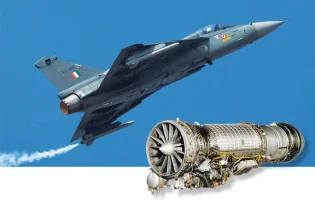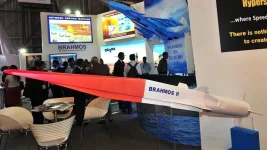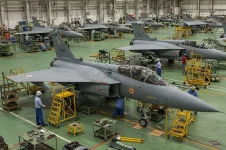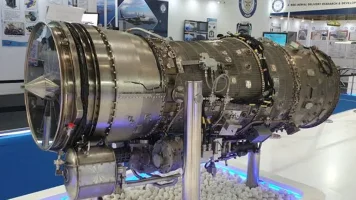- Views: 3K
- Replies: 21
Recent visual confirmation shows that Russia has begun arming its Sukhoi Su-35S fighter jets with the new K-77M long-range air-to-air missile, a development that could significantly alter air combat capabilities in South Asia.
This has prompted strategic analysis in India, where the missile is being viewed as a potential upgrade for the Indian Air Force (IAF) Su-30MKI fleet to counter advanced missile systems deployed by China and Pakistan.
A New Generation of Air-to-Air Missile
The missile, officially known as the K-77M (also R-77M or Izdeliye 180), is a highly advanced weapon developed by Russia's Vympel Design Bureau. It represents a significant leap in capability over its predecessor, the R-77-1.Open-source intelligence analysts recently highlighted images of the K-77M mounted on a Su-35S engaged in operations, confirming its entry into active service.
Technologically, the K-77M is designed for Russia's most advanced aircraft, including the stealth Su-57 fighter.
Its key innovation is an Active Phased Array Antenna (APAA) seeker, which functions like a miniaturised radar in the missile's nose. This makes the K-77M highly accurate against fast-moving targets and exceptionally resistant to electronic jamming.
Furthermore, a dual-pulse rocket motor allows the missile to conserve energy during flight, enabling it to accelerate in the final phase and engage targets at a reported maximum range of 190 kilometres, a substantial increase from the 110 km range of the older R-77.
The Strategic Imbalance Facing the IAF
The operational deployment of the K-77M comes at a critical time for the IAF, whose fleet of over 260 Su-30MKI jets forms the core of its air power. These aircraft currently use the R-77 missile, which is now outmatched by the new PL-15 missile used by India's neighbours.The Pakistan Air Force (PAF) has integrated an export version of this missile, the PL-15E, onto its Chinese-made J-10CE and newer JF-17 Block III fighters.
With a range of approximately 145 km, the PL-15E gives the PAF an advantage in beyond-visual-range (BVR) engagements, allowing its pilots to fire on IAF jets from a safer distance. China's own Air Force operates the standard PL-15, which is believed to have an even greater range of over 200 km.
India is developing its own advanced long-range missile, the Astra series. However, the Astra Mk-2 is still in trials, and the more capable Astra Mk-3 is not expected to be widely available for several years. This creates a temporary but dangerous capability gap for the IAF.
A Potential Solution with Challenges
Acquiring the K-77M for the Su-30MKI fleet could provide India with a powerful counter. Its 190 km range would not only close the gap but could restore the IAF's long-range superiority over the PAF's PL-15E.Since the Su-30MKI and Su-35S share a similar technological base, integrating the K-77M is considered technically feasible and would create a formidable combination when paired with the Su-30MKI's powerful Irbis-E radar.
However, several obstacles remain. The K-77M appears to be in limited production, and Russia's own military needs may slow down its availability for export.
Integrating a new weapon system onto the Su-30MKI would also require extensive software modifications and flight testing, a process that takes time.
Furthermore, India’s decision will be influenced by geopolitical factors, including international sanctions on Russia and India's own national policy of "Atmanirbhar Bharat," or self-reliance in defence production.
New Delhi must weigh the immediate operational need to counter a clear threat against its long-term goal of developing indigenous defence technologies. The K-77M thus presents itself as a potent, but complex, stopgap solution.





